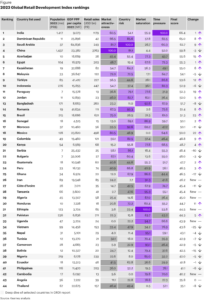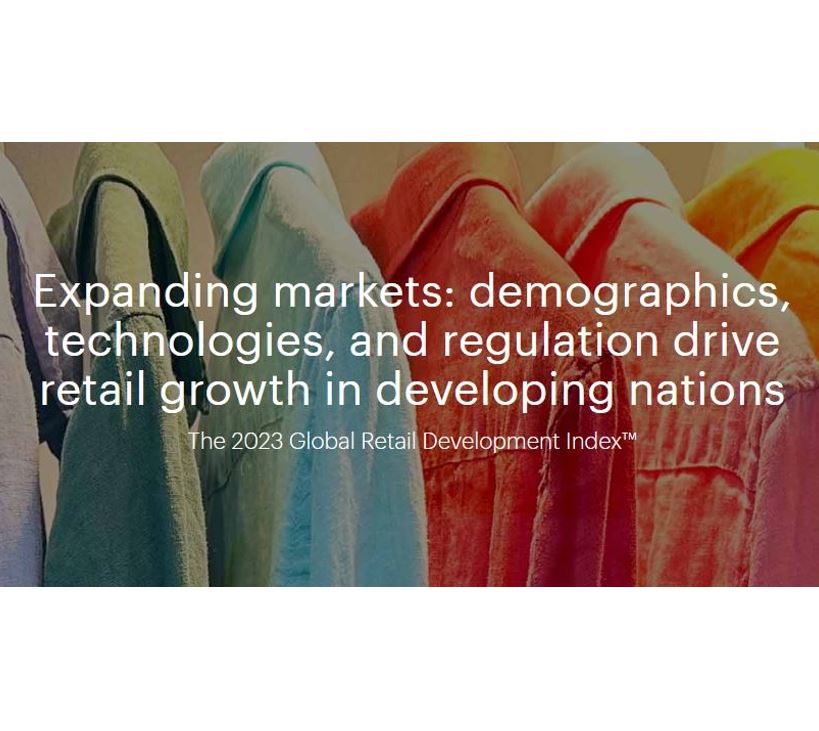
ASIA PACIFIC. A study from global management consultancy Kearney has identified several Asia Pacific countries as among the most promising retail markets in the world.
According to Kearney’s 2023 Global Retail Development Index (GRDI), India, China, Malaysia, Indonesia and Bangladesh rank among the top 15 economies that retailers should prioritise when establishing their presence.
The report focuses on the agility and dynamism of retail economies adapting to a reshaped world.
As China and India continue to be the most attractive markets to global investors given their market size and fast-growing consumer base, their regional neighbours also benefit from their status.
China’s retail sector is strengthened by its innovative technologies, experiential retail concepts and a highly digitised retail market. While in India, its large working population, rapid urbanisation and government initiatives like Digital India stimulate its retail sector.
In emerging Southeast Asian markets such as Indonesia, a growing middle class, expanding infrastructure and increasing urbanisation are seen as the main drivers of growth in the retail sector.
The Philippines and Cambodia are also identified as among the markets in the region that show high retail potential, thanks to their growing middle-class populations and urbanisation, as well as favourable government policies attracting foreign investment.
Bangladesh is notably one of the booming markets in the region with a dynamic and rapidly growing retail landscape, attributed to its strong ready-made garment export industry, which has attracted renowned global brands. The garment industry has also become a key driver of the local economy.

Overall, Asia Pacific markets serve as “pillars of strength” in the burgeoning retail sector, Kearney noted.
According to the study, global retail ecommerce sales growth is estimated to increase sharply, adding an absolute value of US$1.4 trillion from 2022 to 2027.
Of this increase, 64% is expected to come from emerging markets.

Six key trends emerge in this year’s GRDI
The GRDI report has also determined six key trends shaping the retail landscape in emerging markets. These are:
- Macroeconomic uncertainty remains high, with global economic recovery being gradual and varying across developing economies.
- Consumers are trading down to less expensive, local and private label items due to inflationary pressure.
- Ecommerce growth continues unabated, with expectations to grow at twice the rate of brick & mortar retail by 2027.
- Omnichannel strategies are becoming increasingly critical, with retailers in developing markets investing in omnichannel capabilities.
- The rise in epayments and BNPL options is reshaping consumer behaviour, with rapid adoption in the APAC and MEA regions.
- Retail AI and technological innovations are being leveraged to create new, experiential marketing approaches to attract and service consumers.
Kearney Asia Pacific Co-Lead, Consumer and Retail Practice Siddharth Pathak said: “This year’s GRDI reflects the diverse retail potential among emerging economies in Asia. From established powerhouses like China and India to rising stars such as Indonesia and Vietnam, each nation offers distinct opportunities and challenges for retail investment in the region.”
He added: “Success in this dynamic market hinges on retailers’ ability to adapt, innovate and strategically navigate the diverse retail landscapes.”
The 2023 GRDI provides what is described as an indispensable roadmap for developing sustainable strategic responses and forging winning value propositions amid the shifts in consumer behaviour and technology adoption and competitive environment. ✈














